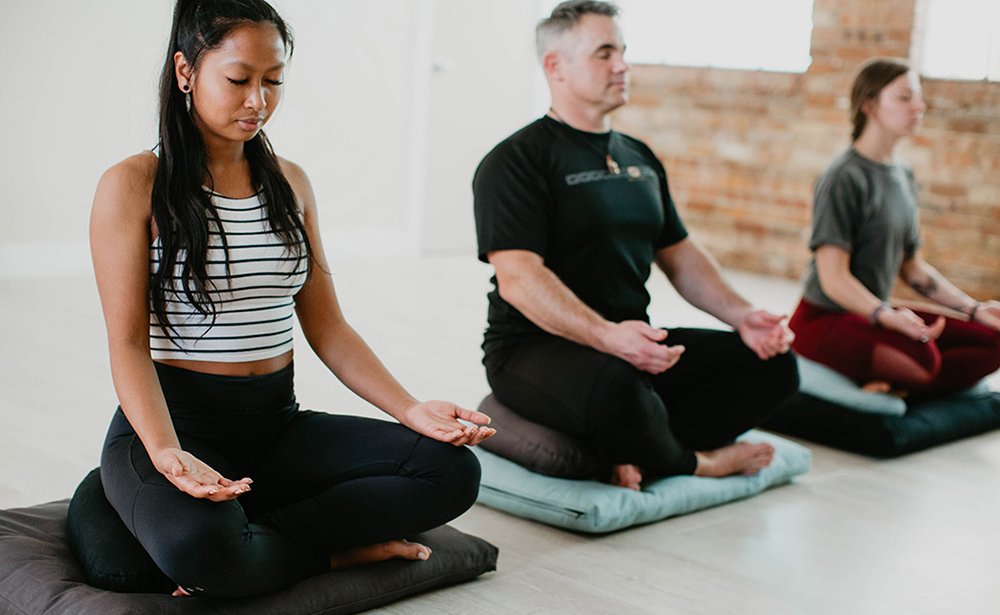
I come from a musical family. My parents were both classical singers and my sisters and I all grew up playing piano and other instruments. I currently play oboe and English horn in the Salt Lake Symphony. I fell in love with playing the piano when I was still in grade school. Sometimes I would become so completely absorbed in whatever I was playing that I would lose track of time and place. I now realize that this was my first experience with dharana (concentration).
Dharana is the sixth of the eight limbs of yoga, and the first of the three limbs that are often called “the heart of yoga.” Dharana, along with dhyana (meditation) and Samadhi, are the three limbs that are most concerned with cultivating the mind. All the other limbs cultivate a peaceful mind as well, but the last three do so most directly.
Taming the Wild Monkey
Anyone who has ever attempted to practice meditation is well aware of what an undisciplined, unconcentrated mind feels like. The Buddhist image of a wild monkey, careening from tree to tree is an apt metaphor. My first attempts to practice meditation were a mix of chaos and frustration. Was my mind really that out of control?
It was, and even now after more than 30 years of practice, it still sometimes feels that way. But I now have a toolbox full of remedies, ways to collect and ground the mind. Sometimes, focusing in on each inhalation and exhalation gives my mind a place to land. At other times, tuning into sensations in a particular area of the body is helpful. Collecting the mind on metta (kindness) phrases can also be a great concentration practice.
The point is to give a place for your mind to land. This doesn’t mean that thinking will magically disappear. That’s not the point of practice. The mind thinks. That’s what it does. But practicing dharana—continually bringing the mind back to the breath, a mantra or whatever we’re focusing on—begins to train the mind. It creates a sense of grounding. It teaches us how to bring our object of concentration into the foreground, allowing thoughts, feelings and sensations to recede into the background. Then we’re no longer subject to the chaos.
How to Practice Dharana
- Choose an object for concentration. Because my experience is with mindfulness practice, I use the breath as my object. So that’s what I’ll explain here.
- Find a comfortable seat, on a meditation cushion or in a chair. Tune into your natural breath.
- Is there a place where the breath feels clear for you, maybe the nostrils, the chest or the abdomen? Settle your awareness on a place where the breath feels clear.
- When you notice your mind wandering, which it will, gently bring your awareness back to your breath. This will happen many times in the course of your meditation. Don’t fret. It’s helpful to remember that each time you notice your mind wandering and bring your mind back to the breath, you are training your mind. You are strengthening your ability to be mindful.
- It’s very helpful to commit to be mindful at the beginning of each inhalation and exhalation. For example, as you begin to inhale, you can say to yourself, “just this inhalation.” As you begin to exhale, you can say, “just this exhalation.” This helps to keep you on track in each moment. This doesn’t mean that the mind won’t still wander off, but affirming your commitment with each part of the breath can help keep you on track.
Like all the other limbs of yoga, dharana is a lifelong practice. Sometimes it will seem relatively easy, and other times, it will feel like a slog. That’s the nature of our lives. Nothing stays the same. But slowly, with practice, you really can train your mind. Enjoy the ride.
